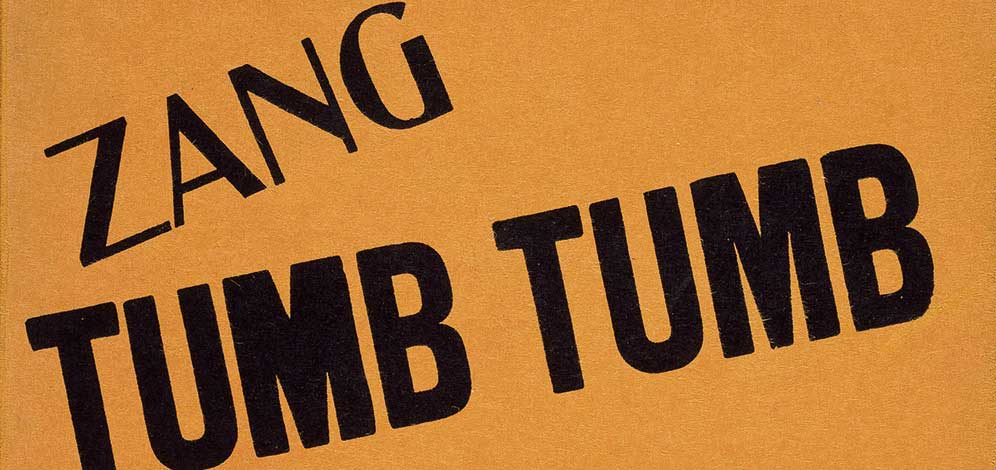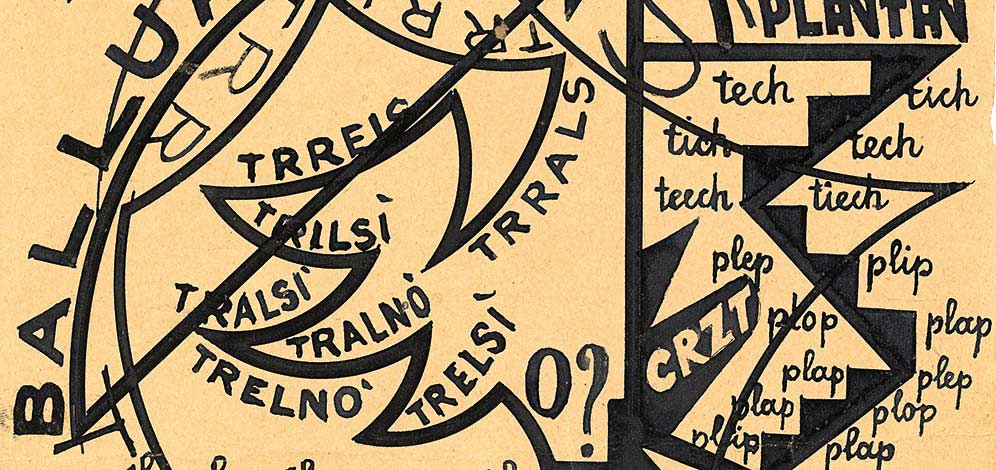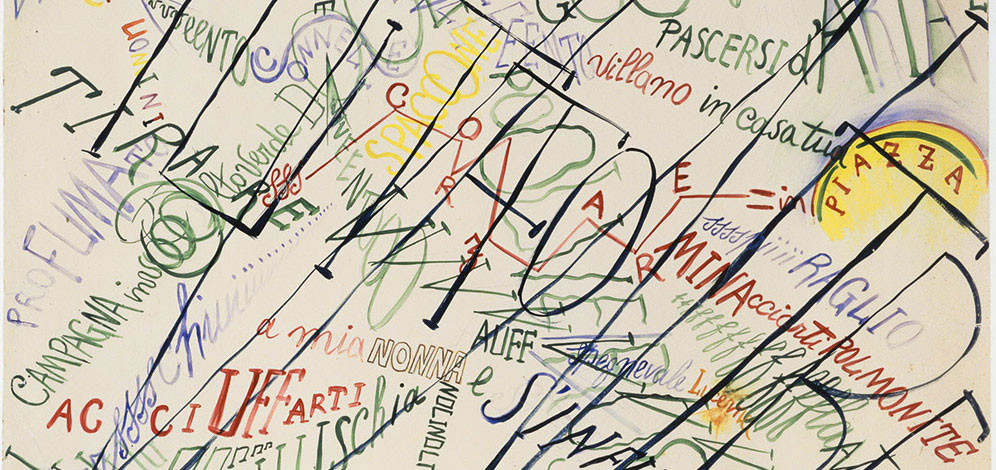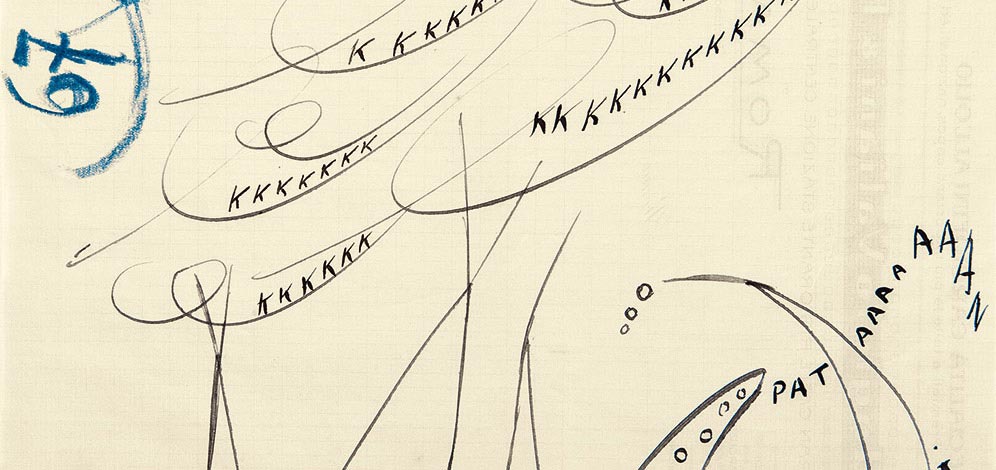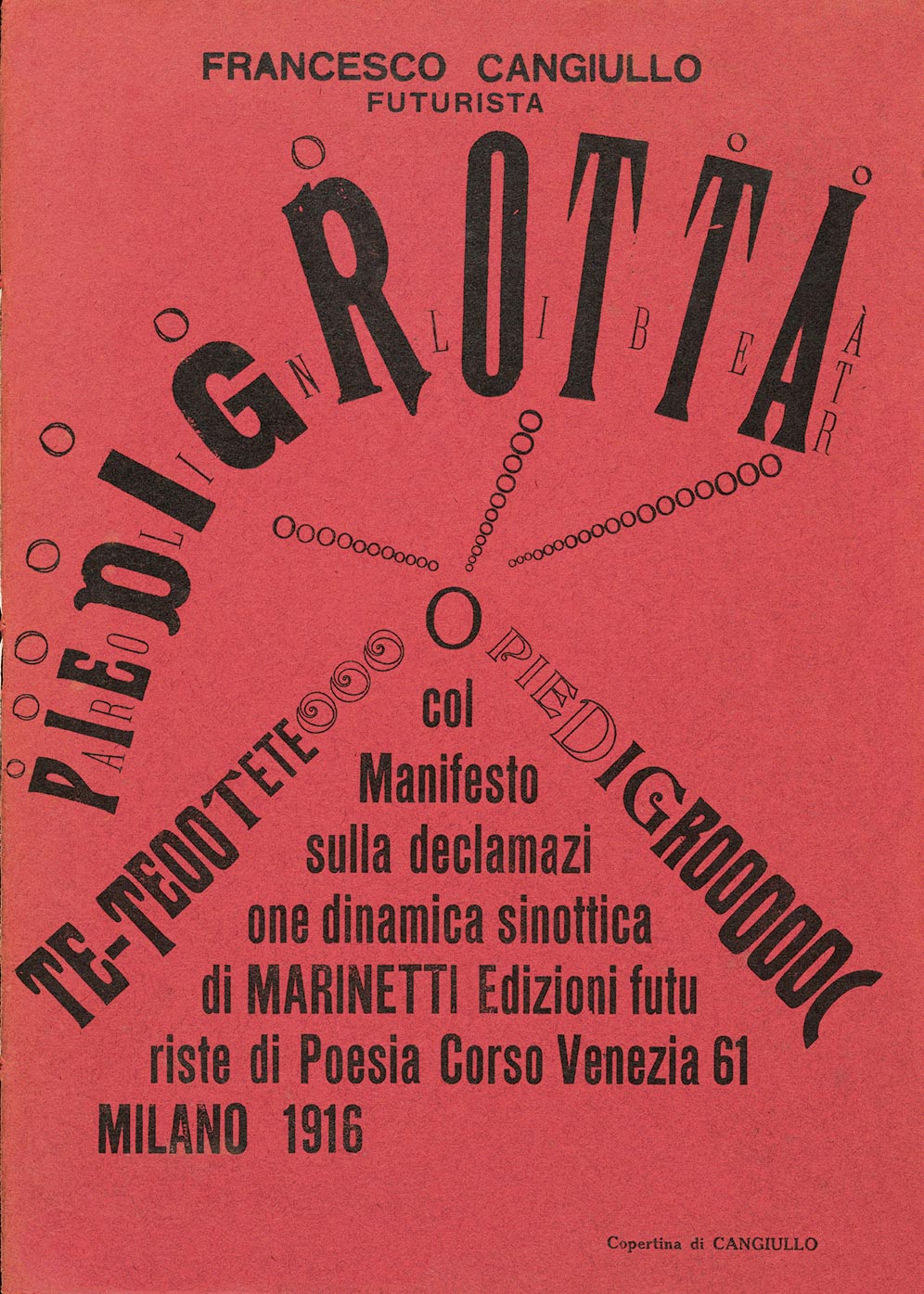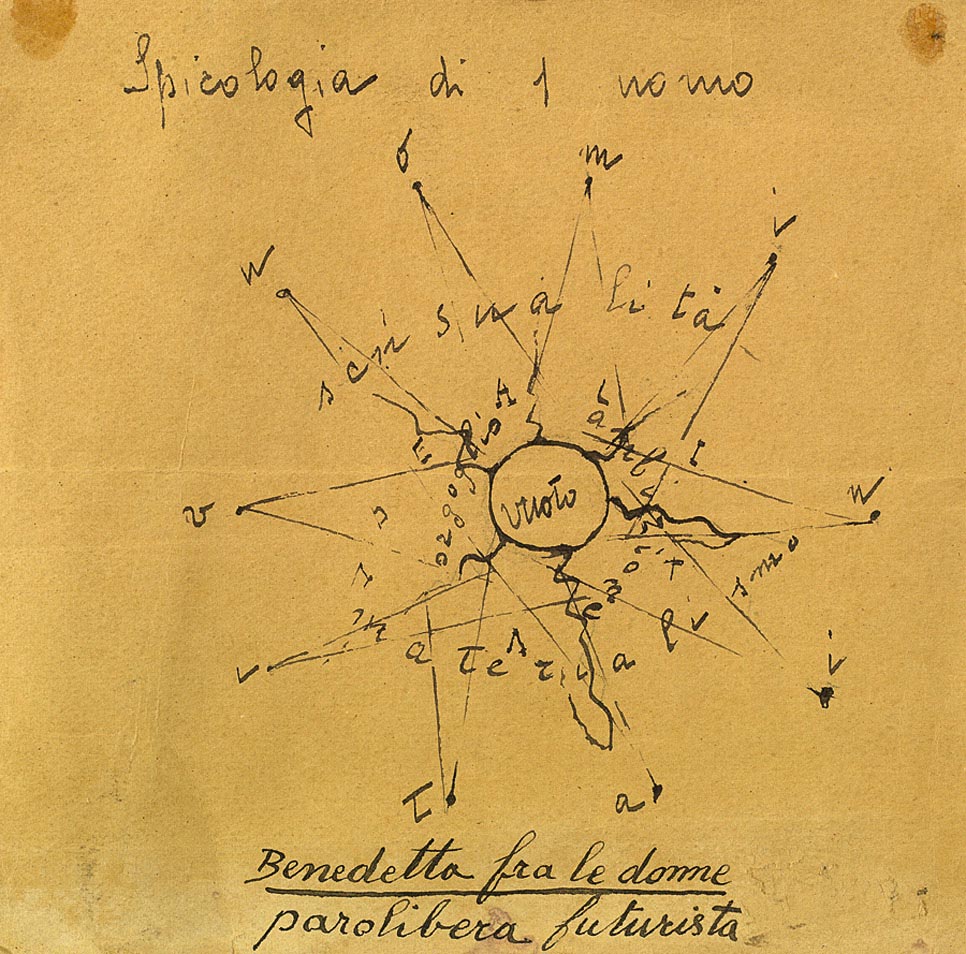In one of their pivotal inventions, the Futurists conceived a style of free-form, visual poetry called parole in libertà, or “words-in-freedom.” Following F. T. Marinetti’s example, the Futurists liberated words and letters from conventional presentation by destroying syntax, using verbs in the infinitive, eliminating adjectives and adverbs, abolishing punctuation, inserting musical and mathematical symbols, and employing onomatopoeia. Words-in-freedom poems were read as literature, experienced as visual art, and performed as dramatic works. The Futurists published them in multiple formats and declaimed them at the Futurist serate (performative evenings).
While Marinetti introduced the form, many Futurists contributed their own interpretations. A group of pictorially, verbally, and aurally imaginative sketches for words-in-freedom (called tavole parolibere) originated in the revolutionary period of the 1910s. Giacomo Balla invented phonovisual constructions, while Fortunato Depero devised an abstract language of sounds he called onomalingua. Francesco Cangiullo’s Large Crowd in the Piazza del Popolo (1914) engages the themes of the city, the crowd, and upheaval. The circular structure of Carlo Carrà’s Chronicle of a Milanese Night Owl (1914) captures the sensory whirlwind of voices, sounds, and figures he encountered during a nocturnal walk in Milan.

